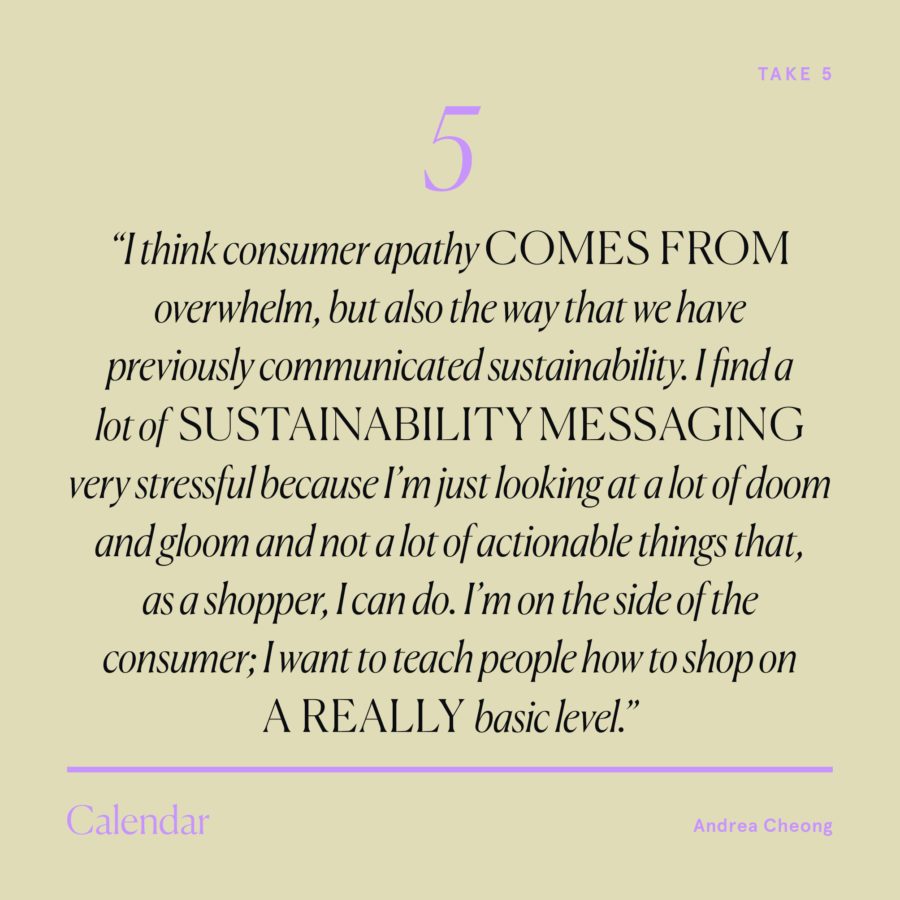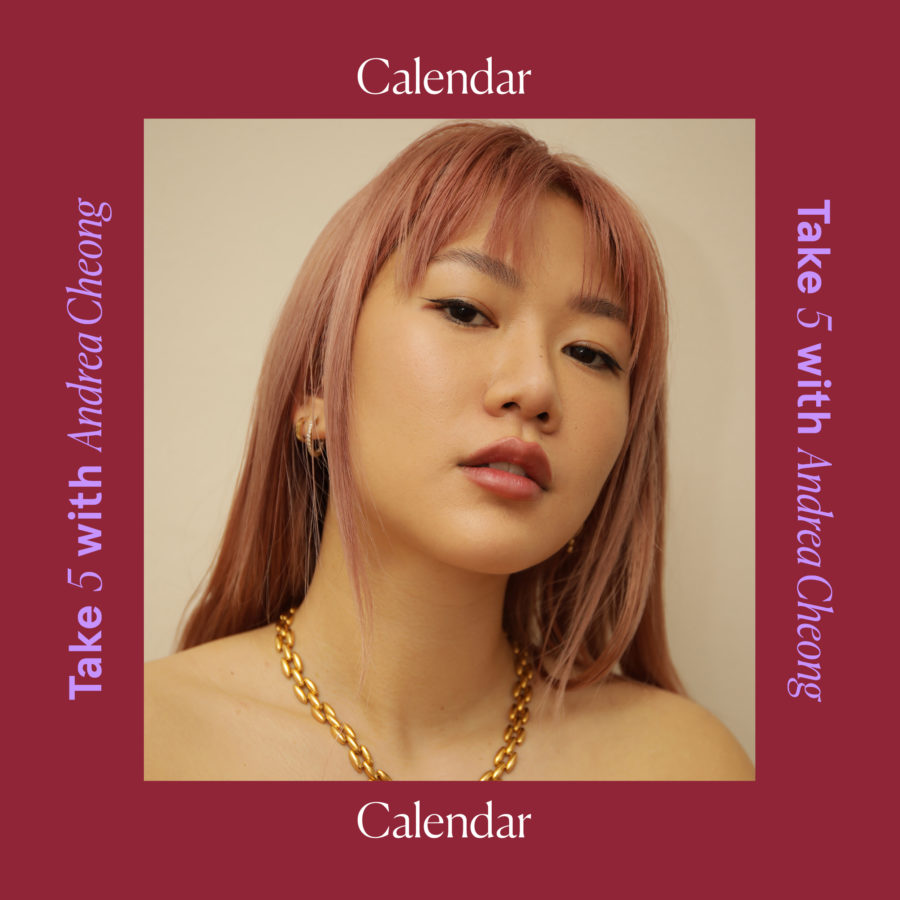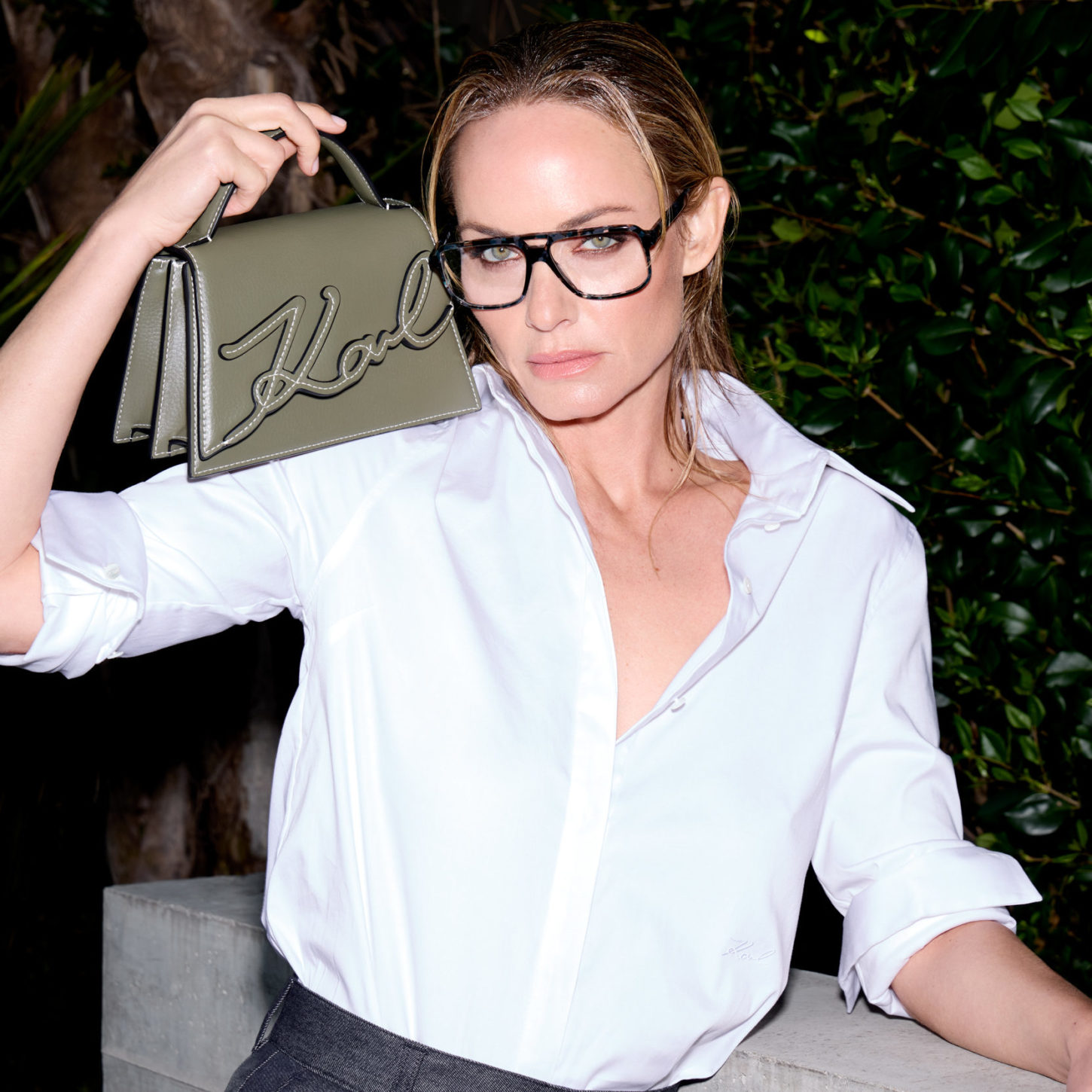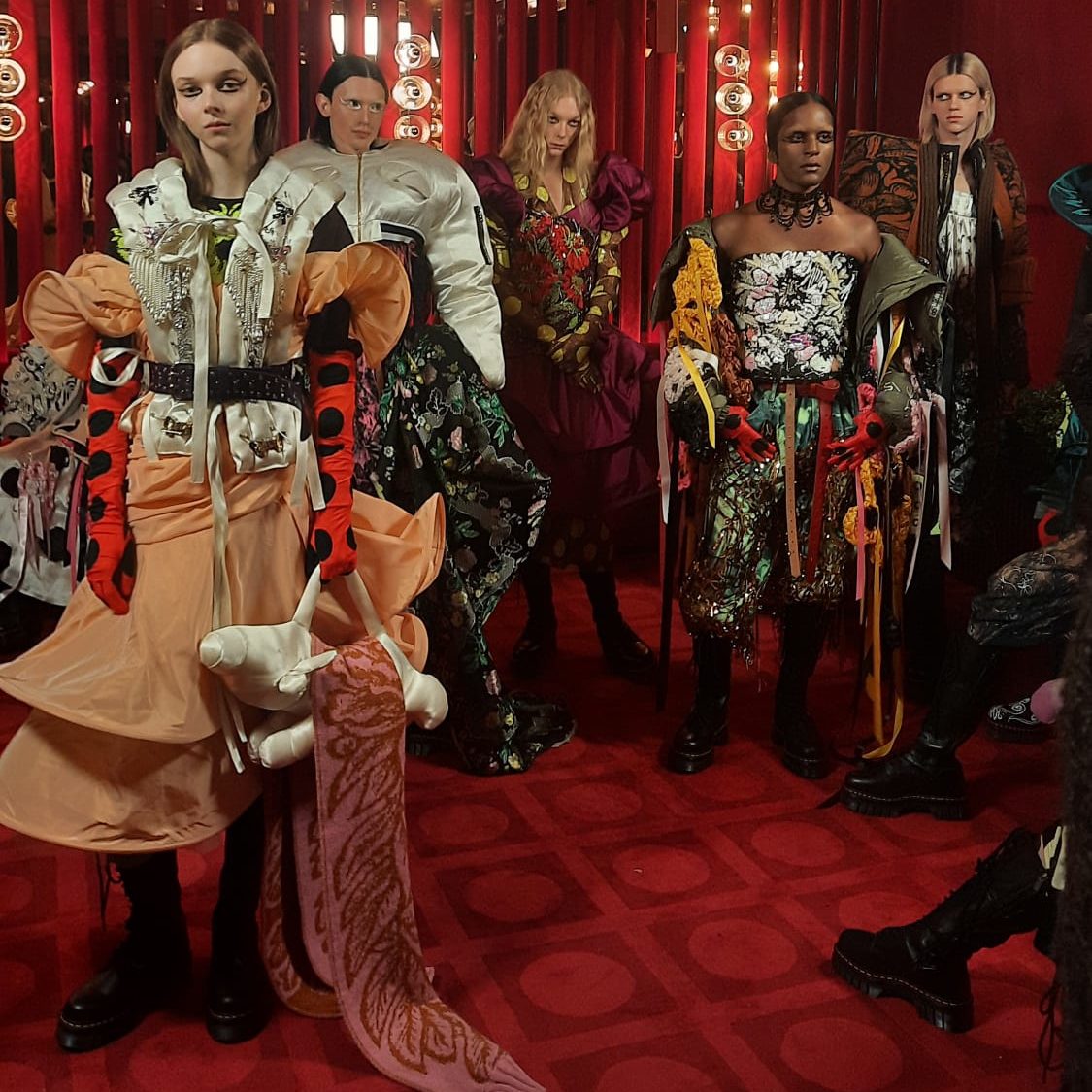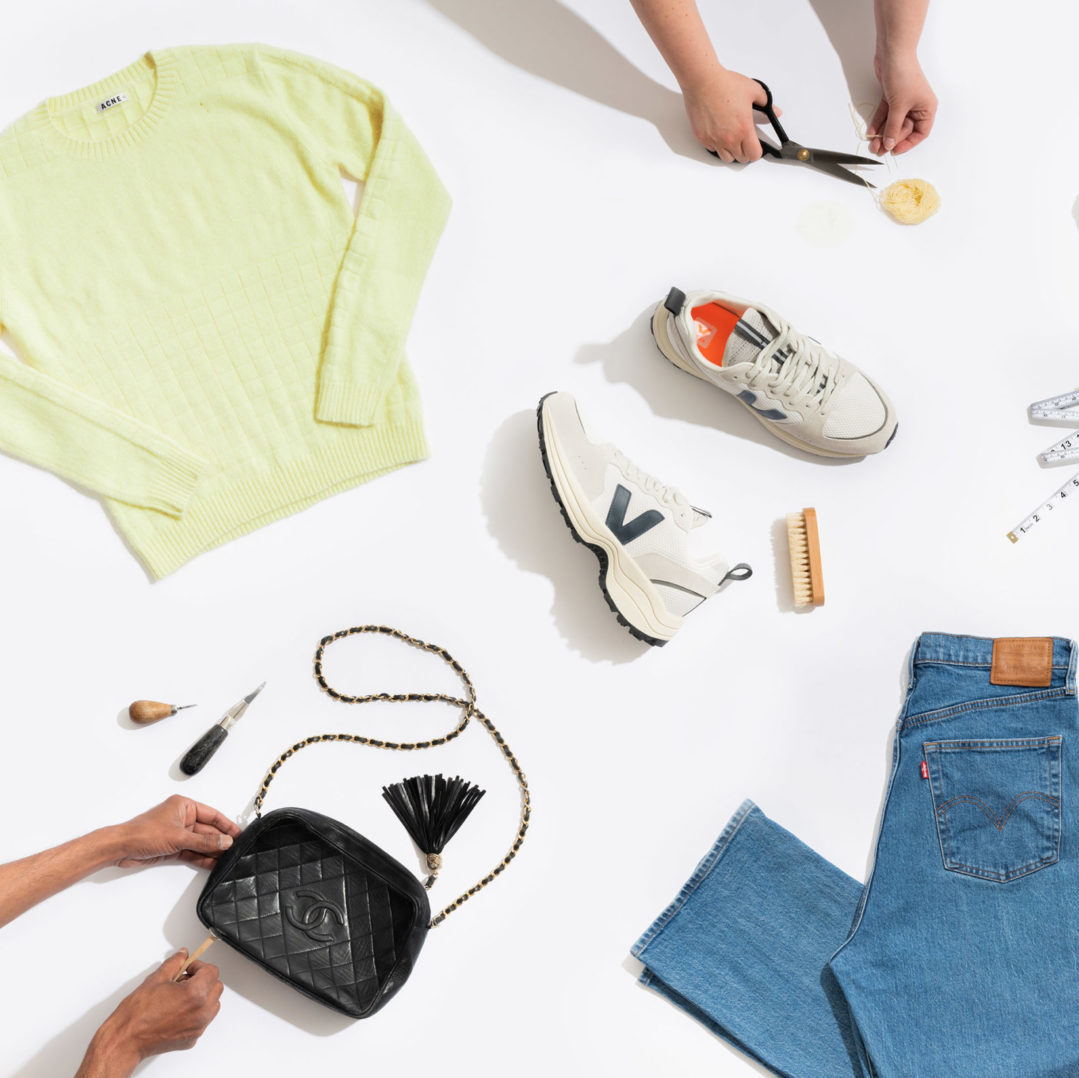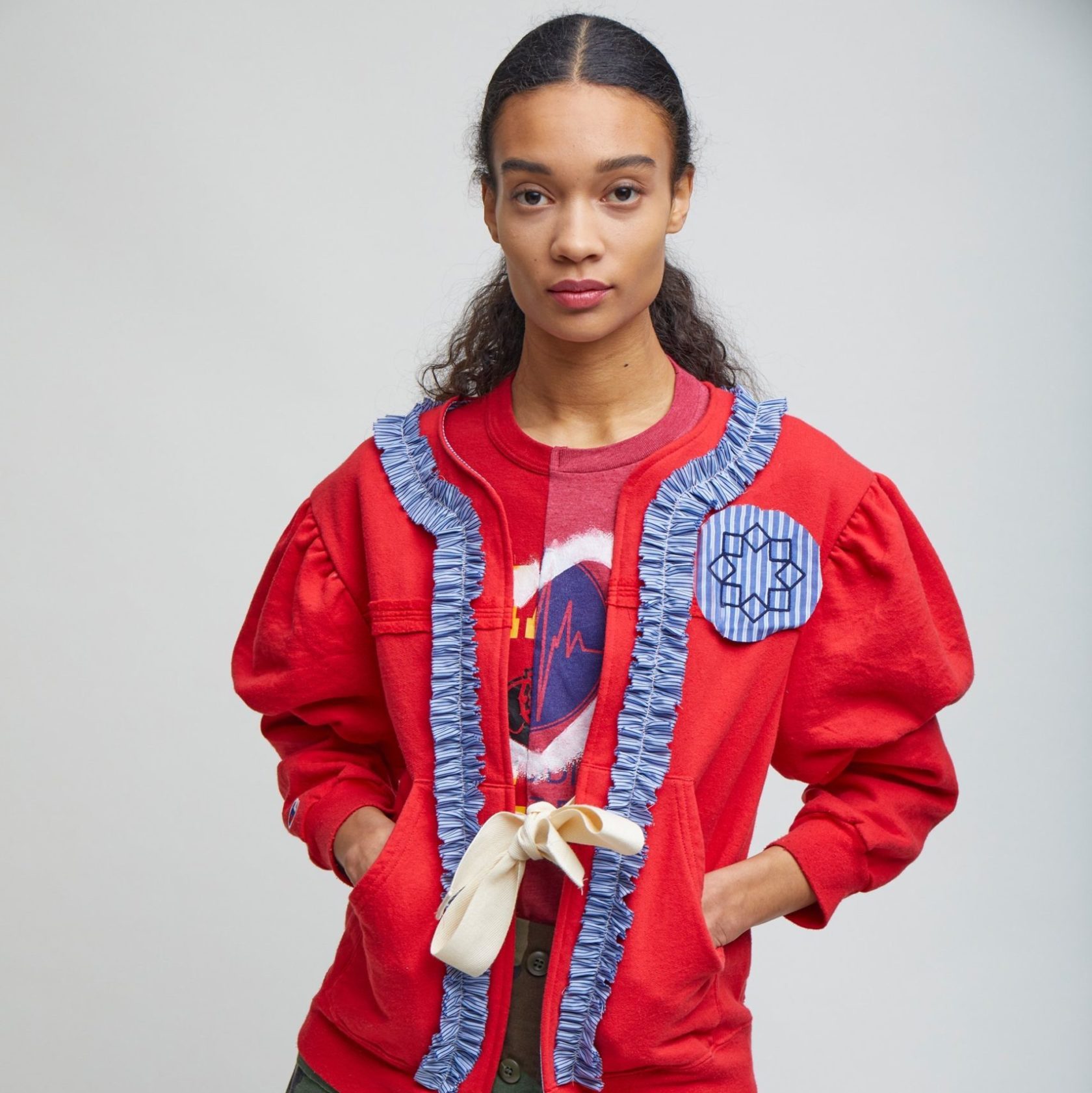September | Take 5
The Genuinely Practical Guide To Shopping Well
Wondering why you’ve got mountains of clothes but nothing to wear? Author and expert Andrea Cheong knows the answer – and she’s got the five-step solution. Find out how she’s teaching us all to shop smarter, not just for our wardrobes, but for our mental health, bank balance and the planet, too
Emma SellsAndrea Cheong is here to completely transform the way you shop. The author, founder of The Mindful Monday Method (more on which shortly), and reformed impulse-buyer knows exactly how it feels to be faced with an expanse of clothes that you wanted, bought, but have no real desire to wear. She understands how impossibly difficult and overwhelming it can be to navigate the intricacies of building a sustainable wardrobe. And, best of all, she’s cracked the code and knows exactly where you should start to tackle both issues at once.
Cheong has honed a five-pronged, intentional way of shopping – the aforementioned Mindful Monday Method – that is better not just for your wardrobe, but for your mental health and bank balance, and the planet, too. The crux of it: take the time to work out what your personal style is so that your head won’t be turned by influencer posts and fleeting trends; and learn how to assess the quality and construction of clothes so that, regardless of the pull of brand names or marketing campaigns, you’ll invest in pieces that are worth what you spend on them and that will really last. Her approach is refreshingly straightforward and practical, aided by step-by step videos shared on Instagram and TikTok – appraising the worth of new collections from much-loved brands, say, or analysing seams, hems and fabrics – and a newly released book, Why Don’t I Have Anything To Wear?, which collects all her hard-won advice and knowledge in one place.
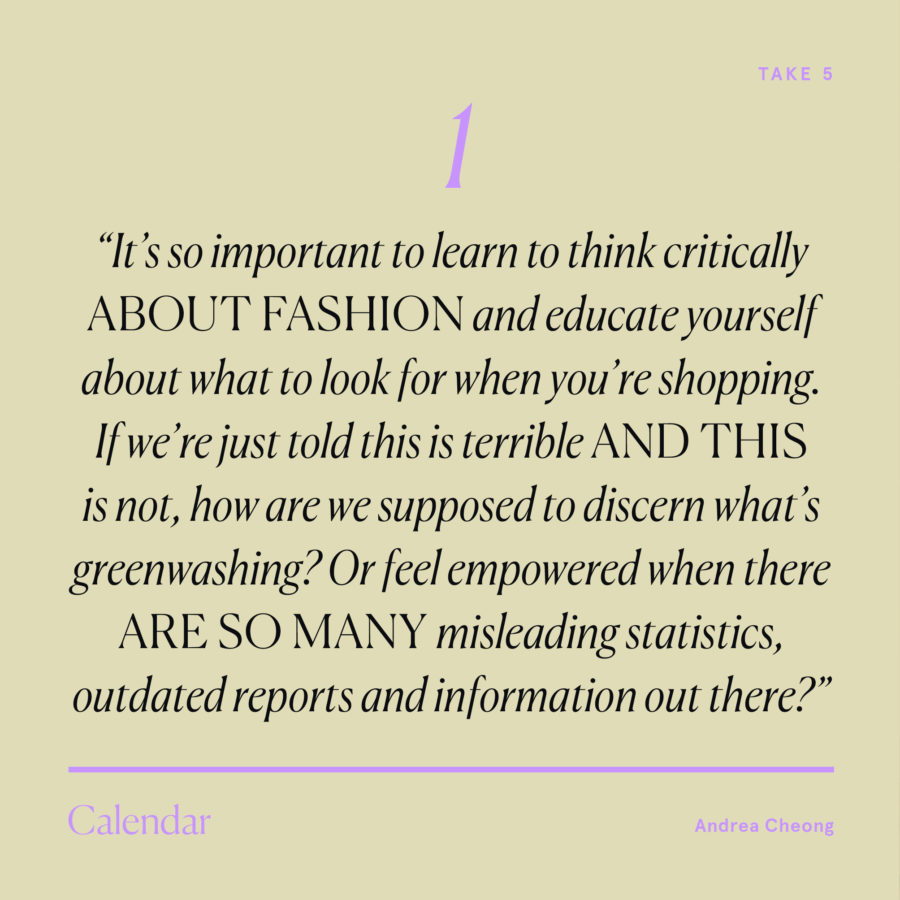
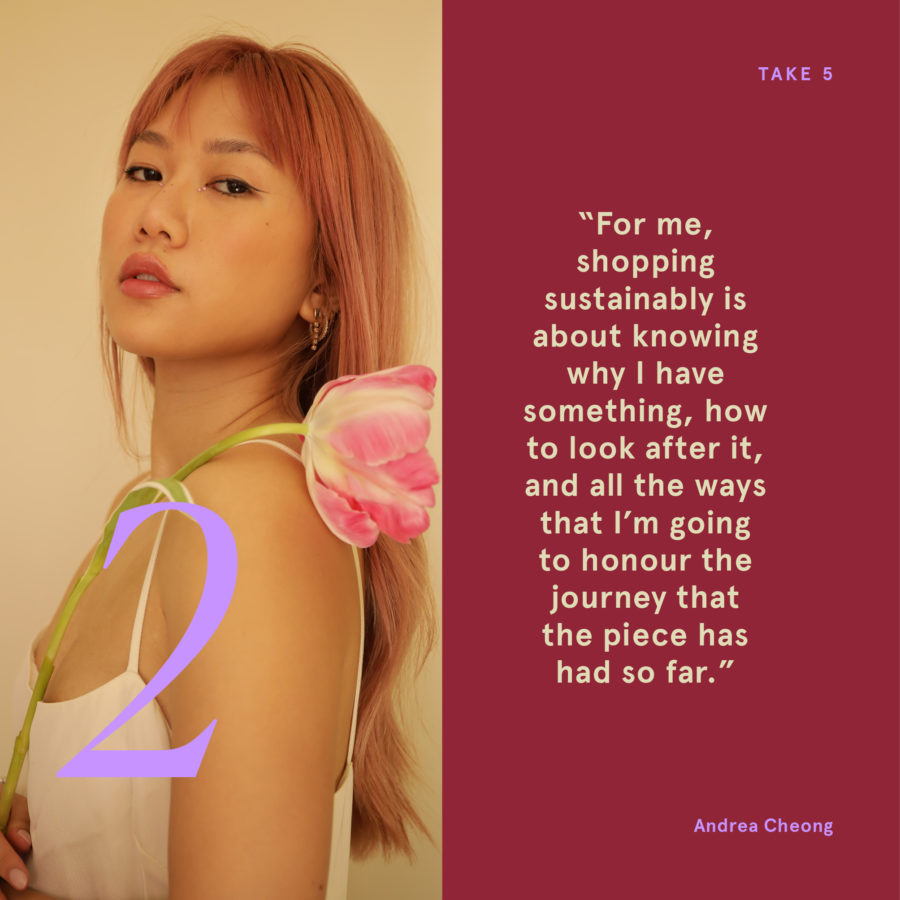
The book offers exercises designed to help whittle your wardrobe down to the pieces that spark joy and that you’ll actually wear – from undertaking a full wardrobe audit to working out precisely why you can’t find what you want amongst the clothes you already own. “I didn’t create the Mindful Monday Method to show people how to style themselves, but doing it does mean that you really get to know yourself and home in on what really matters to you,” says Cheong. “Breaking down the myth of the capsule wardrobe, specifically, really helped me find my personal style. Analysing what you already have and what you wear on repeat is very revealing.” For her, that means a self-described ‘slutty grandma’ aesthetic that’s powered by cowboy boots, mini dresses and cropped jackets, many of which she wears on repeat both in real life and on social media. “I don’t feel pressured to dress for anybody else anymore,” she says. “I realised that I need to prioritise my values in my clothing – I think when you don’t have a disconnect between how you’re presenting yourself and the choices you’ve made, or what you actually wear and who you believe your best self to be, you actually feel a lot more confident.”
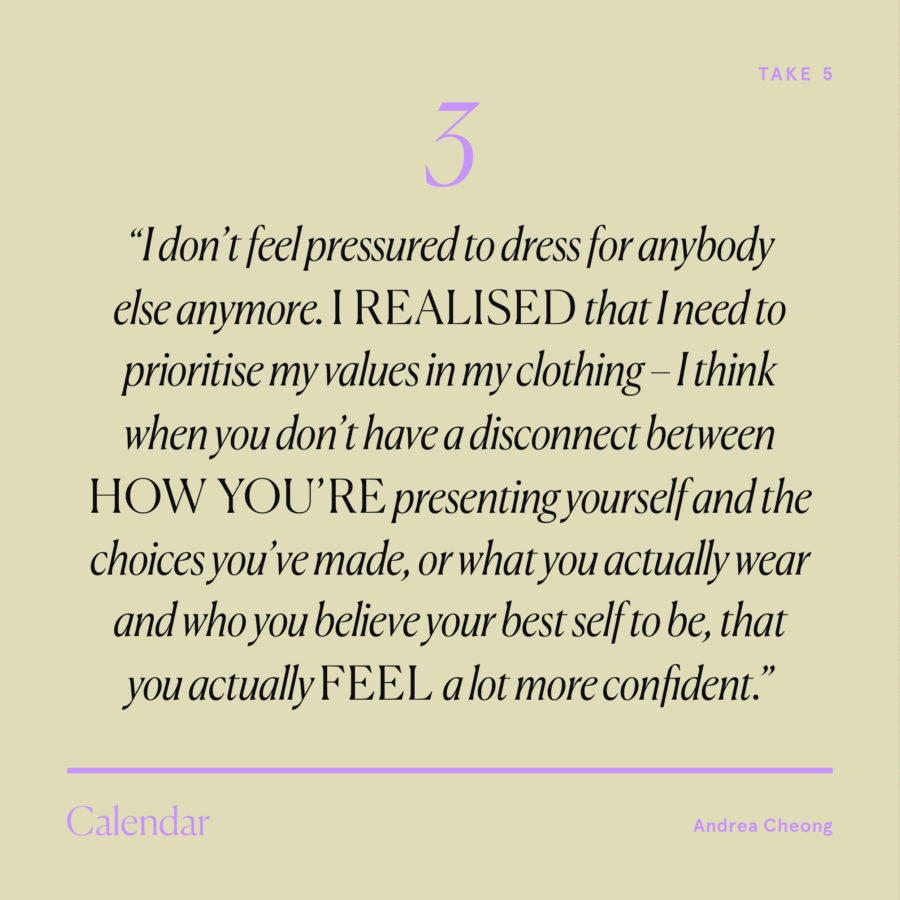
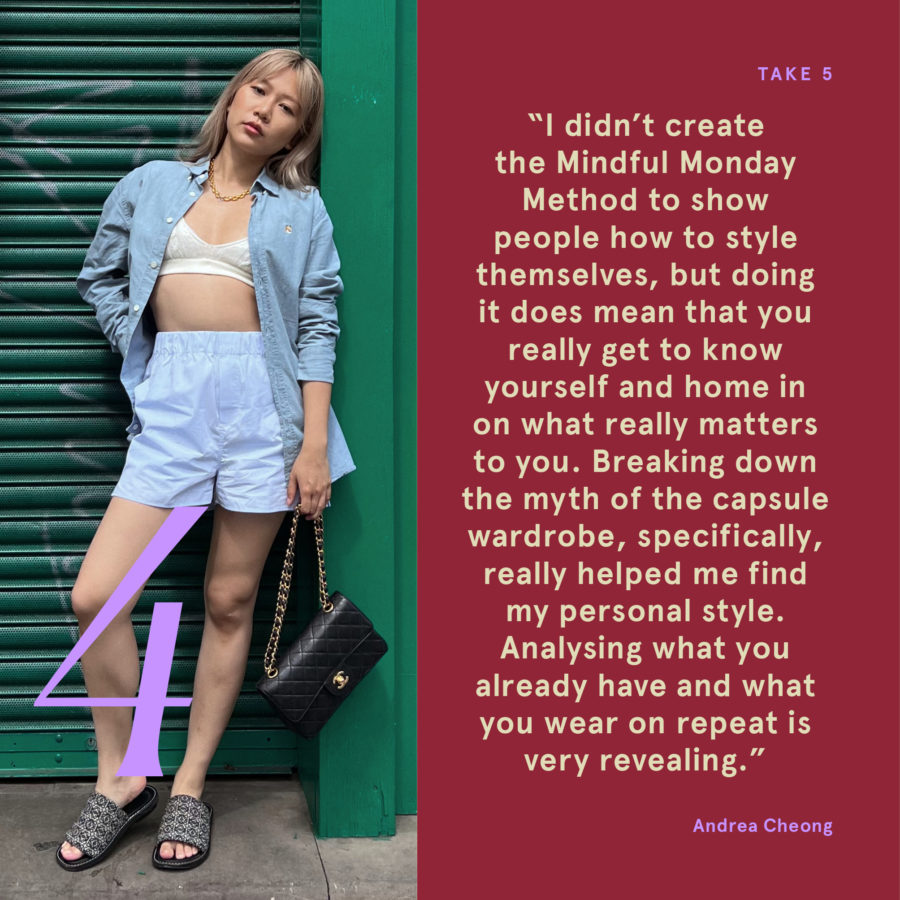
In a space filled with activists, campaigners and negative news cycles, Cheong is firmly on the side of the consumer, and her attitude to sustainability is not necessarily what you might expect. “For me, shopping sustainably is about knowing why I have something, how to look after it, and all the ways that I’m going to honour the journey that the piece has had so far,” she says. And while she sees the value in consciously created and made-to-order brands, she doesn’t see them as the only route to shopping with minimal impact. Rather, she wants us all to take individual responsibility for finding our own paths, and to have a much greater understanding of what’s involved in the making of our clothes so that we can better appreciate and value them. Knowledge is power, after all. “It’s so important to learn to think critically about fashion and educate yourself about what to look for when you’re shopping,” she says. “If we’re just told this is terrible and this is not, how are we supposed to discern what’s greenwashing? Or feel empowered when there are so many misleading statistics, outdated reports and information out there?”
Most of all, she wants us to break our addiction to the dopamine hit that comes from buying something new, and to find the joy in our wardrobes rather than feel burdened by them. And, in the process, to shop in a more planet-friendly way, too. “I think consumer apathy comes from overwhelm, but also the way that we have previously communicated sustainability,” she says. “I find a lot of sustainability messaging very stressful because I’m just looking at a lot of doom and gloom and not a lot of actionable things that, as a shopper, I can do. I’m on the side of the consumer; I want to teach people how to shop on a really basic level.”
